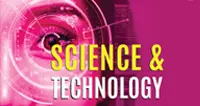GMRT Reveals Fast Radio Bursts
Recently, for the first time, astronomers from the Pune-based National Centre of Radio Astrophysics (NCRA-TIFR) and the University of California have used the Giant Metrewave Radio Telescope (GMRT) to map the distribution of atomic hydrogen gas from the galaxy hosting a fast radio burst (FRB), revealing important clues on the origin of the burst.
Key Findings
- FRB20180916B: The FRB - FRB20180916B - produces repeated very short bursts, and these have been found to arise in the outskirts of a spiral galaxy just half a billion light years away.
- Merger: The study indicates that the FRB host galaxy has undergone a ....
Do You Want to Read More?
Subscribe Now
Take Annual Subscription and get the following Advantage
The annual members of the Civil Services Chronicle can read the monthly content of the magazine as well as the Chronicle magazine archives.
Readers can study all the material before the last six months of the Civil Services Chronicle monthly issue in the form of Chronicle magazine archives.
Related Content
- 1 Novel Technique to Enhance Next-Gen Lighting
- 2 Majorana 1 Quantum Chip
- 3 Successful Wet Tests of Matsya-6000
- 4 Project Waterworth
- 5 Revolutionary Drug Delivery System for Rheumatoid Arthritis
- 6 DRDO Successfully Tests VSHORADS
- 7 Successful Test of Naval Anti-Ship Missile (NASM-SR)
- 8 Thermal & Magnetic Structure of Solar Coronal Holes
- 9 3D Structure of an Exoplanet’s Atmosphere Revealed
- 10 ESA’s Euclid Telescope Discovers Rare Einstein Ring

- 1 ISRO Launches EOS-04 and Two Other Satellites
- 2 HelioSwarm and MUSE: New Sun Missions
- 3 Study Sheds New Light on Pluto’s Atmospheric Pressure
- 4 Novel Tool to Understand Long-Term Memory Consolidation
- 5 AI-based Algorithm to Detect Habitable Planets
- 6 Scientists Develop Novel Nanoparticles for Crop Protection
- 7 Technological Breakthrough Achieved in Quantum Key Distribution Test
- 8 Nuclear Fusion: UK Scientists Reach New Milestone

